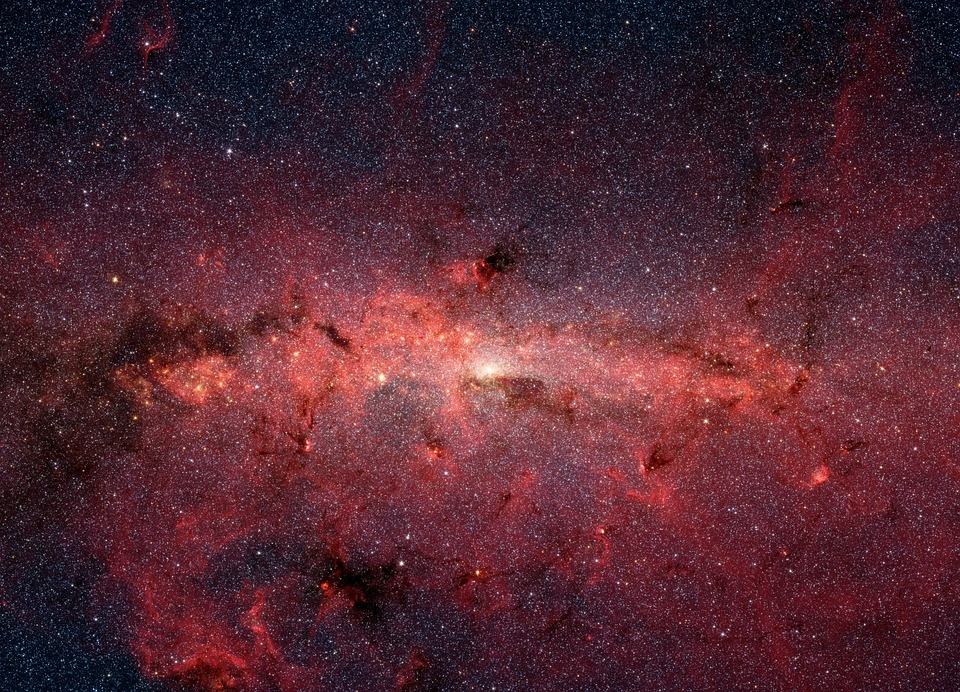Astronauts and scientists are the only ones who have been able to hear the sounds of space and the universe. Now, everyone can be able to hear what the Milky Way sounds like thanks to NASA’s Chandra X-Ray Observatory.
The Chandra scientists at Harvard University were able to translate images of our Milky Way galaxy into sound using a process called sonification. The digital and visual cues were turned into audio signals. Budding astronomers and space enthusiasts can now be able to hear the galaxy, the varying sounds representing the position and brightness of the cosmic objects that could be found in the middle of the galaxy. The volume is also controlled by the brightness of the objects. This audio visualization project is part of the agency’s Universe of Learning Program.
“Stars and compact sources are converted to individual notes while extended clouds of gas and dust produce an evolving drone. The crescendo happens when we reach the bright region to the lower right of the image,” said the scientists from Chandra.
The astronomers have also translated images of the famed Pillars of Creation into audio visualizations as well as Cassiopeia A. When it comes to the supernova remnant, the astronomers explained that the sounds in their audio visualization of the remnant were mapped to the four elements that are found in the debris from the star and other high-energy data. The soundwaves in the Pillars of Creation are listened to from left to right, generated from both invisible and X-Ray light.
Meanwhile, NASA has also released an image of a distant galaxy taken by the Hubble Space Telescope. The image snapped by the Hubble was of the galaxy cluster Abell 2744, found millions of light-years away from Earth. The galaxies shown in the image may look close together, but they are actually millions of light-years apart, showing just how big the universe is.
The image is also combined with x-rays from the Chandra X-ray Observatory and optical light data from the Hubble.
2020 marks the Hubble’s last year of roaming through space as it will retire in 2021. It will then be replaced by the James Webb Space Telescope.



 Eggs from men, sperm from women: how stem cell science may change how we reproduce
Eggs from men, sperm from women: how stem cell science may change how we reproduce  Why some people don't trust science – and how to change their minds
Why some people don't trust science – and how to change their minds  What is minoxidil, the anti-balding hair growth treatment? Here’s what the science says
What is minoxidil, the anti-balding hair growth treatment? Here’s what the science says  Six space missions to look forward to in 2024
Six space missions to look forward to in 2024  Why now is the time to address humanity’s impact on the moon
Why now is the time to address humanity’s impact on the moon  Alpha, beta, theta: what are brain states and brain waves? And can we control them?
Alpha, beta, theta: what are brain states and brain waves? And can we control them?  Black hole, neutron star or something new? We discovered an object that defies explanation
Black hole, neutron star or something new? We discovered an object that defies explanation  Tatahouine: 'Star Wars meteorite' sheds light on the early Solar System
Tatahouine: 'Star Wars meteorite' sheds light on the early Solar System  How do airplanes fly? An aerospace engineer explains the physics of flight
How do airplanes fly? An aerospace engineer explains the physics of flight  Larger and more frequent solar storms will make for potential disruptions and spectacular auroras on Earth
Larger and more frequent solar storms will make for potential disruptions and spectacular auroras on Earth  Customizing mRNA is easy, and that's what makes it the next frontier for personalized medicine − a molecular biologist explains
Customizing mRNA is easy, and that's what makes it the next frontier for personalized medicine − a molecular biologist explains  The brightest object in the universe is a black hole that eats a star a day
The brightest object in the universe is a black hole that eats a star a day  Orbital resonance − the striking gravitational dance done by planets with aligning orbits
Orbital resonance − the striking gravitational dance done by planets with aligning orbits  Could a telescope ever see the beginning of time? An astronomer explains
Could a telescope ever see the beginning of time? An astronomer explains  Our survey of the sky is uncovering the secrets of how planets are born
Our survey of the sky is uncovering the secrets of how planets are born 































